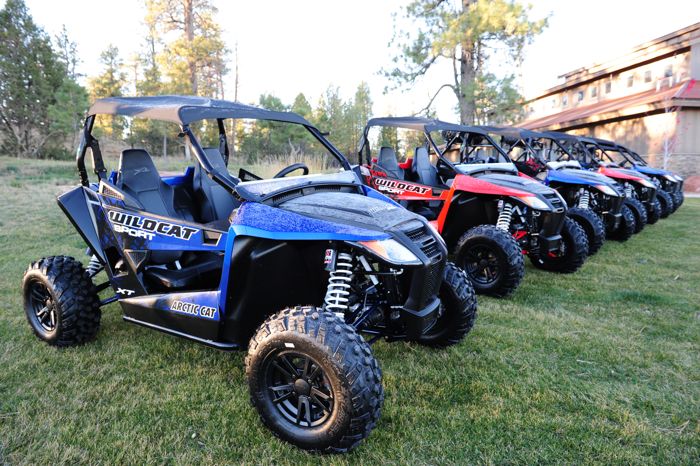
Confession time: I don’t own a side-by-side. But with a love for adventure rides (preferably shared with others), a family and a predisposition to motorized recreation, I am exactly the demographic who such machines are aimed at.
I’ve gotten as far as, “Hmmm, it would be really fun to own one or two of these things,” but I’ve never made the jump to, “Put me down for one in green and another in white.” I always get tripped up comparing how much I’ll use them relative to the size of my bank account. Plus our family already has a batch of off-road bicycles and motorcycles.
The emergence of sport-focused models the like the Arctic Cat Wildcat line have lowered the threshold of that persnickety “trip.” Their off-road prowess and thrill potential are compelling reasons trade some of my two-wheeled machines for something with four. But which Wildcat?
Good question – one that I found myself considering during the two days I spent riding the new Arctic Cat Wildcat Sport near Bryce Canyon, Utah.
Comparing Specs
The Sport is Arctic Cat’s fourth and most recent model in its Wildcat line, following the original, the 4-seater and the Trail.
Dimensionally the 60-in. wide Sport slots in between the original Wildcat (64 in.) and and the new-this-year Trail model (50 in.). In fact, the Sport and Trail are largely the same model, sharing the same chassis, interior and engine. The primary difference between the two models is the suspension components, with the Sport getting longer A-arms front and rear to achieve the increased width and ground clearance.
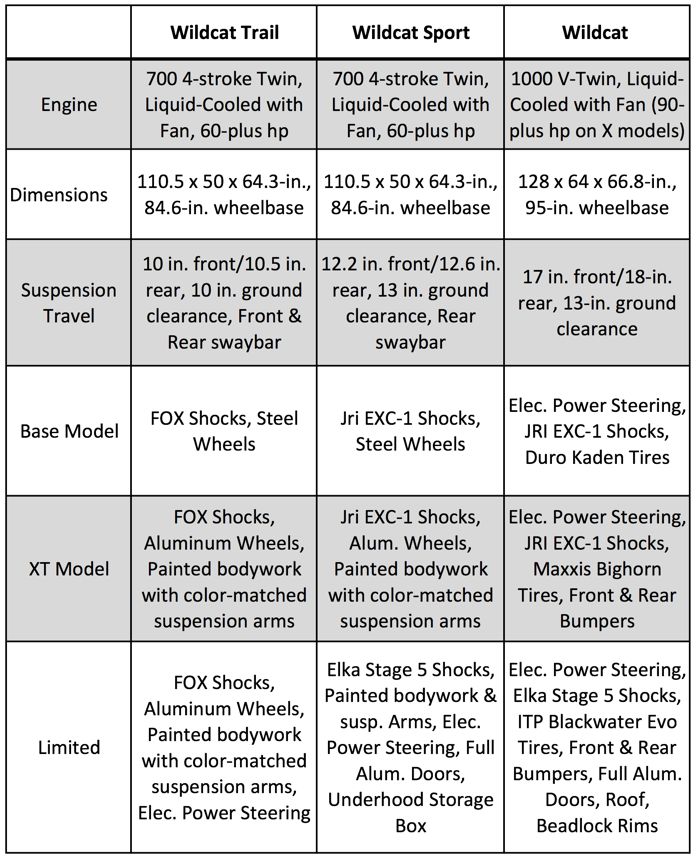
This handy-dandy chart lists MOST of the differences between the various 2015 Arctic Cat Wildcat models. To see the whole list of items, CLICK HERE to go to Arctic Cat’s website, where you can compare various models.

Oh, yeah…there’s also a price differences. There are significant jumps between the three different Wildcat models, as well as between the base, XT and Limited versions of each. No small consideration for most of us.
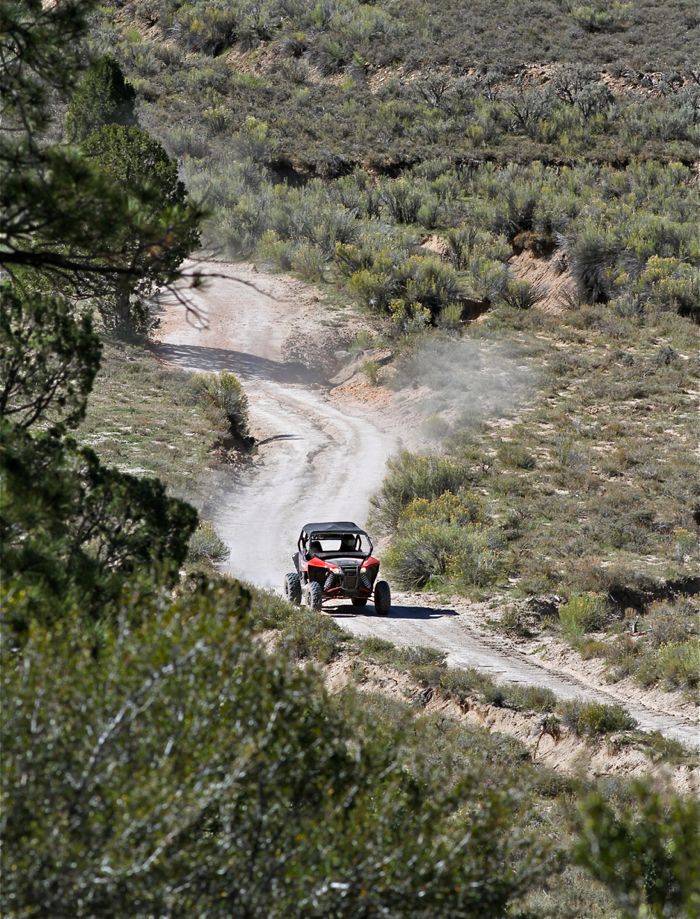
200 Miles, 2 Days
Over two glorious days near Bryce Canyon, I and a dozen or so other journalists sampled the Wildcat Sport (with a few of us spending time in the Trail as well) for 200 miles in terrain that ranged from gravel roads to rugged two-track, plus some dry river beds and some fairly technical narrow-track.
The purpose of the event was for Arctic Cat to introduce the new Sport model to the media. Fortunately, they also had some EPS-equipped Trail Limiteds for additional testing.

Jumping between the XT and Limited Sport models during the first day’s 100-mile ride to Panguitch, Utah, and back gave me several hours of familiarity with the new platform. Compared to the Trail, the extra 10 inches of width and increased suspension travel give the Sport a feeling of greater stability and invitation to ride aggressively. Both Sport suspension packages are tuned stiff – probably a bit too stiff for my tastes – but are great for the kind of extreme measures my colleagues were intent to capture with their cameras.
I experimented enough with the compression adjustment on the shocks (both the Elka and JRi) to confirm that there’s a useful range of tuning options. Sometime I’d like to spend a few hours of dedicated shock calibration to get a more informed perspective on what’s possible. Maybe next summer?

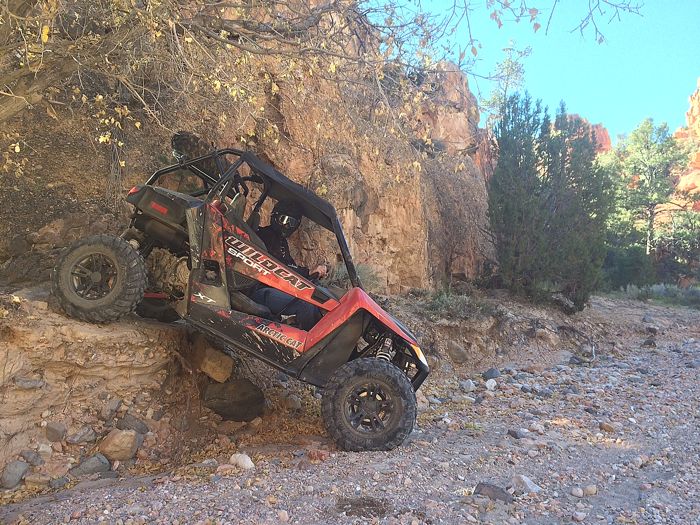
One conclusion that’s easy to draw from two days of riding the Sport is that its 13 inches of ground clearance are very much appreciated. By comparison, the Trail’s 10 inches translated in more touches on the rocks in this area of Utah.
The balance and weight distribution of the Sport is spot-on, delivering predictable steering and traction in the range of conditions we rode in Utah (caveat: there was no mud).
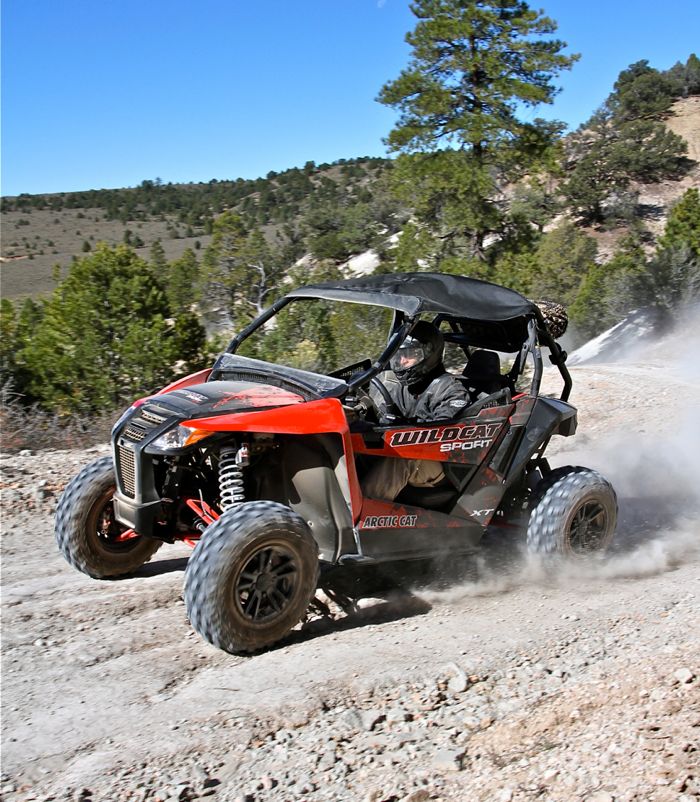
I prefer the ability for throttle-steering that comes with 2wd, so that’s where I run unless conditions demanded more. Impressively, I’m certain I could have ridden all 200 miles of the two-day event without every having touched 4wd, although I did employ the electronic-actuated assistance on several occasions in technical terrain when the pucker-factor suggested extra traction.
The cab, seat and infinitely adjustable title steering wheel fit my 5’ 9” frame perfectly. We spent upwards of six hours riding the first day. While a couple of the taller-than-6-foot behemoths in our group expressed a wish for a little more legroom, I was as comfortable as could be.
I must admit that the Electronic Power Steering on the Sport Limited is very, very nice. And noticeable. The ease of driving one-handed – as well as navigating tight situations that require frequent sweeps of the wheel – with EPS creates a tremendous conflict for a cheapskate like myself. It is SO good and easy, but it’s a $2,300 upcharge from the base model and $1,800 more than the XT.
Causing further inner turmoil for me regarding the price and option differences between the XT and Limited models is the fact that I actually preferred the half doors of the XT while riding in Utah (partially because I like the latches on the half-doors better). However, the plastic underhood storage container on the Limited is definitely handy.
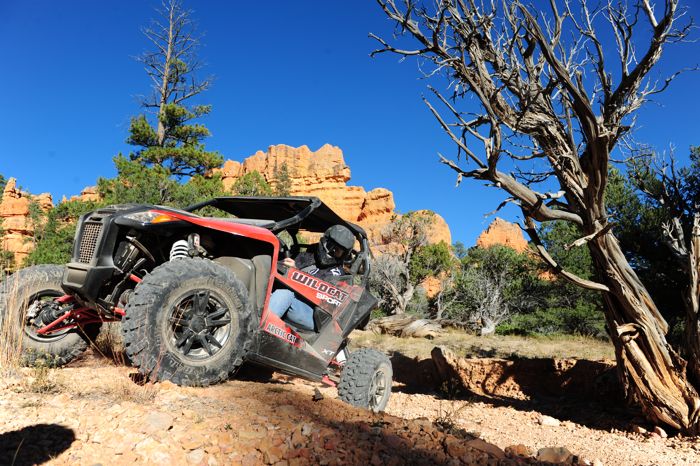
Sight lines in the Sport are good, allowing for a good view of the trail in front of and around the machine. It’s easy to detect where each wheel is while negotiating rocks and conditions that require precise wheel placement. However, the additional fender flairs (needed for the increased width) detract slightly from the sight lines compared to the Trail model.
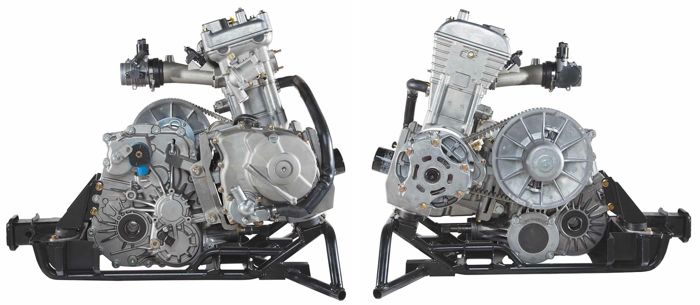
I continue to be impressed with the 700 parallel twin engine that powers both Sport and Trail models. Designed by Arctic Cat and manufactured by Kymco, this stout engine produces a claimed 60-plus horsepower. Mated with the TEAM RapidResponse clutches and transaxle, engagement happens at 1700 rpm with full-shift (power) occurring at around 7500 rpm. The whole package is seamless and well matched to the size, suspension and weight of the smaller Wildcat models.
(By contrast, when I ride the original Wildcat its 90-plus-hp V-Twin feels a little lacking compared to its amazing suspension, travel and off-road capability.)
In my experiences on long stretches of road, the Sport (and Trail) can achieve 65 mph before bumping against the approximately 7700 rpm rev limit.
While the Utah ride provided no opportunity for riding 2-up in the Sport, I have spent some time riding with (and as) a passenger in the Trail, which shares an identical cab. In short, the ride is comfortable without being crowded. No touching shoulders, no holding hands. I’d be fine riding that way all day.
As for some of the non-headline-grabbing observations, take from this what you will: The headlights are okay (when adjusted properly), but I would for sure add an accessory LED light bar if I did more than just the occasional night ride; All controls (shift lever, 4wd, lights, key) are well positioned; The contoured seats are firmly comfortable; Brake performance is linear and predictable, with an amount of force that’s commensurate with how hard I push the lever.
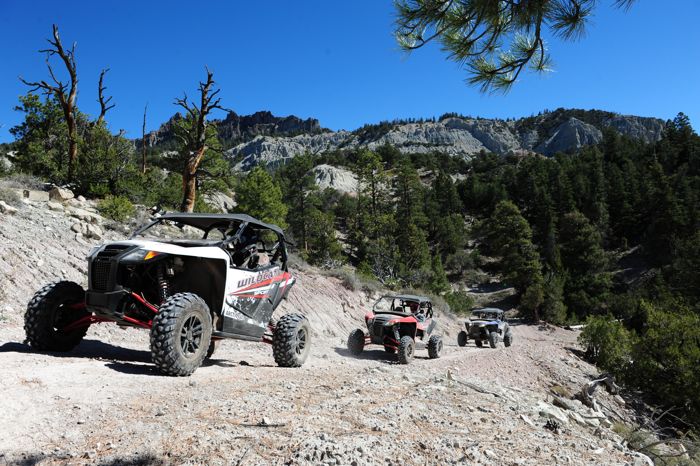
Must Choose One
Will I be one of the thousands of people who will purchase an Arctic Cat Wildcat in the next year? The short answer is, I don’t know. Answering that question involves changing some of the other family pursuits that currently occupy our time and money.
An easier question to answer is WHICH of the Wildcats I’d pick.
I live in Minnesota, a state with a preponderance of ATV trails with a 50-in. maximum width. Hands down, I’d opt for the 50-in. wide Wildcat Trail and be supremely satisfied.
In truth, I had just as much fun riding the Trail throughout Bryce/Panguitch area of Utah, as I did the Sport. The Trail is more nimble, with a softer suspension calibration that I prefer. I would learn to live with the three fewer inches of ground clearance.
If I had any second thoughts about the decision, the price difference would reinforce my leanings. Were I picking the base model of either, the $1,500 savings for the Trail would go a LONG way to helping me convince the Mrs. of our new purchase.
Honestly, the toughest choice would be which Trail to purchase: standard or Limited. Due to my notorious cheap-skatedness, I’d probably opt for the base model, then secretly wish I’d splurged for EPS.
If I lived in a state without size restrictions on UTVs, then the choice would be between the Sport and original Wildcat models.
Frankly, the suspension performance and capability of the original Wildcat far outperforms the Sport model. If you fancied yourself a desert racer (or at least drove like you were one), then I’d suggest doing whatever you can to scrounge up the extra $2,300 to jump from the Sport Limited to the base Wildcat EPS.
But if you ride at more controlled speeds, if the extra funds simply are not available, or if the space considerations (garage, trailer, etc…) don’t allow the extra requirements of the big Cat, then you would be extremely happy choosing a Sport.
Either way, it’s good to have choices.
Thanks for reading.

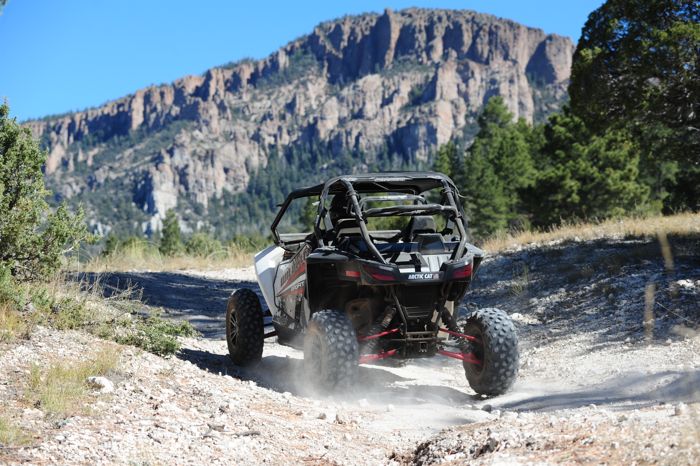
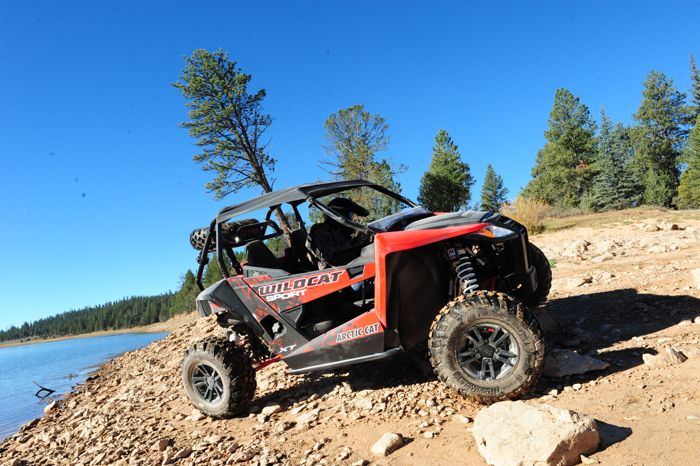
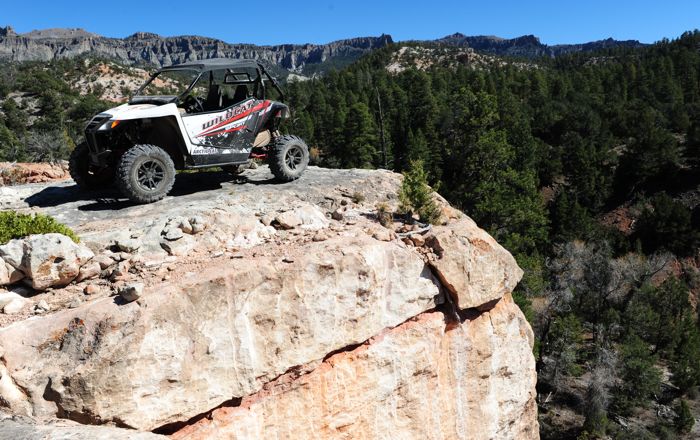
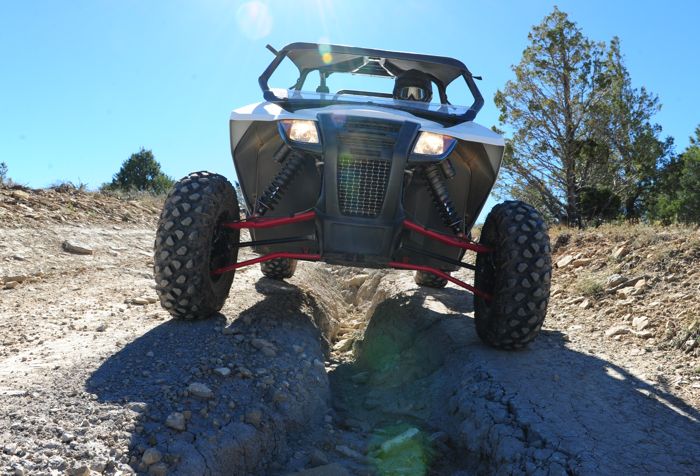



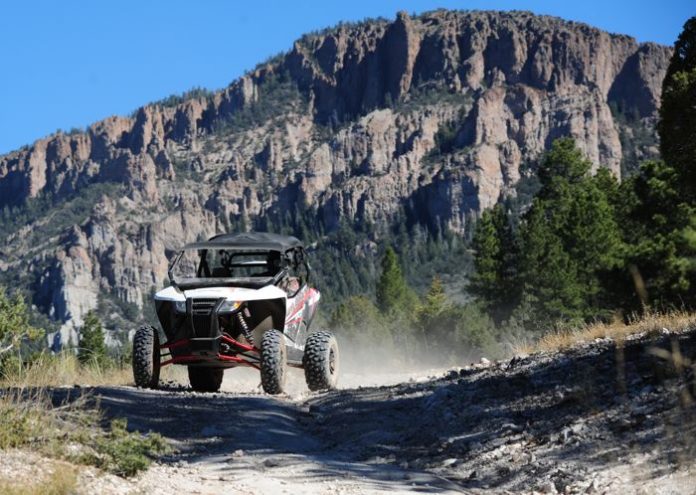
Looks like a great time John!
I thought MN trail restrictions went off of weight and not width. Am i wrong?